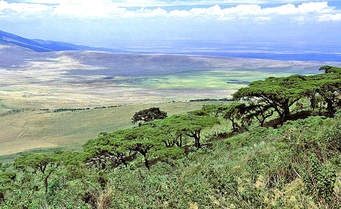Ngorongoro Conservation Area - Africa Natural Tours ( africanaturaltours.com )
Ngorongoro Conservation Area: Africa Natural Tours
AFRICA
NATURAL TOURS
(The best tour company in Tanzania)
Specialized in: Mountain climbing,
Wildlife safaris, Cultural tourism and Beach holidays
Contact
+255 653 679 958 OR +255 692 436 113
Ngorongoro Conservation Area
Ngorongoro
Conservation Area (NCA) was established in 1959. It is located 156 kilometers
west of Arusha. Ngorongoro and it coves an area of 8300sq/km. Ngorongoro
Conservation Area (NCA) it boasts of the finest blend of mountain landscapes
shaped by rifts and volcanoes, wildlife, people and archaeological sites in
Africa. The concept of multiple land use in a conservation perspective is a
deviation from a traditional approach (National Parks & Game Reserves) of
regarding conservation as complete absenteeism of human Interference.
The
NCA becomes one of the first program in the world to pioneering experiment in
multiple land use for the benefits of both Maasai people and wildlife in a
natural traditional setting. NCA is often called ‘African Eden’ and the ‘Eight
Wonder of the Natural World’. Traditional African pastoralists co-operate with
Tanzania’s government bodies to help preserve the natural resources of the area
and to ensure a fantastic experience for Tourists. Ngorongoro is the World
Heritage Site and has also been declared an International Biosphere Reserve by
UNESCO, due to its outstanding wildlife and cultural value.
Ngorongoro Crater
Ngorongoro
is the largest unbroken caldera in the world. It is also known as collapsed
volcano, this natural amphitheater have 250 square kilometers and 23 km wide.
The crater has very steep walls with an average depth of 600 meters at the
altitude of 2,286 m above sea level. The crater alone has over 20,000 large
animals (half of them zebra & wildebeest). This includes some of Tanzania’s
last remaining black rhino. Animals are free to leave or enter the crater but
most of them stay because of the abundance of water and food available in the
crater floor throughout the year. One animal lacking inside the crater though
is giraffe, who cannot negotiate the steep walls easily.
Oldupai(Olduvai) Gorge
It
was here that Dr. Louis Leakey discovered the remains of Homo habilis or
“handy man” regarded by evolutionists as mankind’s first step on the ladder of
human evolution. Researchers say that humans have been part of the Ngorongoro
landscape for millions of years. The earliest sign of mankind in the
conservation area is at LAETOLI, where hominid foot prints are preserved in
volcanic rock dated 3,600,000 years old.
The story continues at Olduvai (Olduvai)
Gorge, a river canyon cut 100 meters deep through the volcanic soils of the
Serengeti plains. Buried in the layers are the remains of animals and hominids
that lived and died around a shallow lake amid grass plains and woodlands, from
perhaps 2,000,000 years ago to the present. The four different kinds of
hominids found there show a gradual increase in brain size and in the
complexity of their stone tools.
But many more fossils have been discovered
here including those of prehistoric elephants, giant horned sheep and enormous
ostriches. Visitors can learn more details of this fascinating story by
visiting the gorge where guides will give on site interpretation of the gorge.
Oldupai Museum at the gorge is also very useful for information and education.
Ngorongoro
Conservation Area (NCA) has a number of other stunning features. These are
shifting sands, Nasera Rock, Olkarien Gorge, Empakai Crater, Olmoti Crater,
Active Oldonyo Lengai volcano, Grassland, Lake Makat, Swamps, Lerai Forest,
Acacia Woodlands and Complex Forests.
Shifting Sands
North
of Oldupai Gorge- a little black sand dune marches across the plains, moving 17
meters a year. Blown by a strong steady wind it somehow maintains its size and
somehow maintains its size and elegant shape.
People and Livestock
In
the past few thousands of years, a succession of cattle herding people
colonized this area from the north. The most numerous and recent are the Maasai
who arrived about 200 years ago. Their strong insistence on their traditional
custom and costume interests many visitors. Today there is over 42,000 Maasai
pastoralists living in the area with their cattle, goats and sheep visitors are
welcome to learn about the culture of the Maasai and buy their handcrafts only
in designated bomas commonly known as “Cultural Bomas”.
]
Activities in Ngorongoro Conservation Area and the crater:
Game
drive, walking safaris (highlands area only, no walking safaris are permitted
inside of the crater) and trekking.
Accommodations:
Lodges,
campsites, guest houses in nearby Karatu town.
Ngorongoro
Conservation Area can be also visited as a day trip, although this is
stretching the limits a bit. If time does not permit a more relaxed option,
this is a destination not to be missed and a day trip should be considered.
For more information visit www.africanaturaltours.com





Comments
Post a Comment